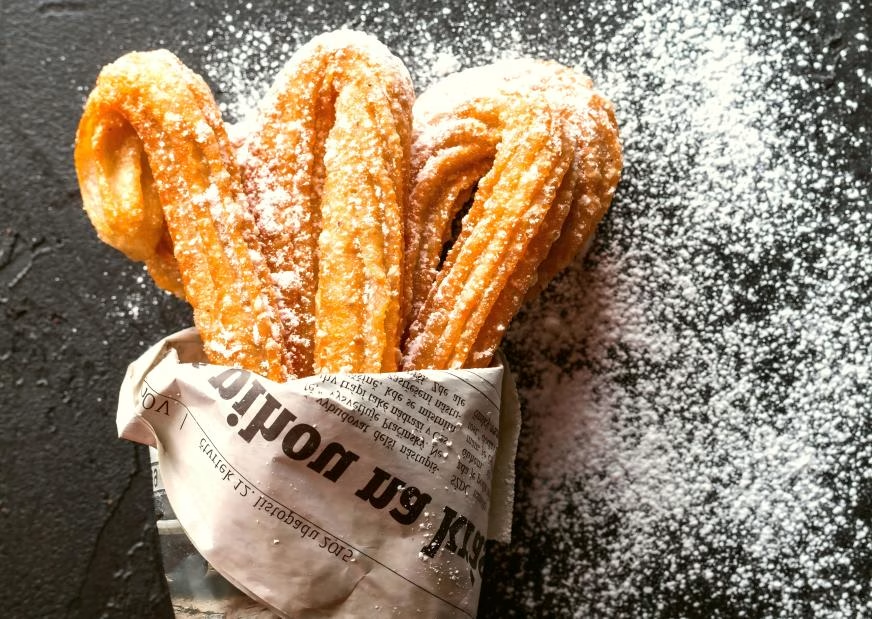Sugar is the most common source of sweetness in desserts, but can you count the types of sugar commonly used in baking? Different types of sugar, such as granulated sugar, powdered sugar, and brown sugar, can significantly impact the flavor of a baked dessert.
How else can these various sugars contribute to the flavor and texture of a dessert?
The Complex and Profound “Sweetness” of Desserts
Sweetness is an essential element of desserts. When it comes to “sweetness,” it’s easy to think only of sugar. But sweetness actually comes in many different forms, each with its own distinct role and complex, profound flavors.
Sugar
Sugar is the most representative ingredient of sweetness. There’s pure sweetness from granulated sugar, the smooth, smooth second-grade sugar, and the rich, slightly tangy brown sugar.
Honey, Etc.
Honey, maple syrup, and dried fruit are also ingredients that contain sweetness. Each ingredient has a distinct sweetness, often blended with other unique flavors to enhance the sweetness of the finished product.
Cream, etc.
Furthermore, cream, heavy cream, and nuts, while not typically considered sweet, can all offer a milky or rich sweetness. By combining these ingredients, you can create a dessert with just enough sweetness.
Sweetness can highlight opposing flavors.
Sweetness can highlight opposing flavors, acting like a guiding light in the darkness of taste. For example, cocoa and coffee have a bitterness that contrasts with sweetness, yet their bitterness can enhance the sweetness.
The tartness of citrus fruits and yogurt, the saltiness of cheese, and the fresh aroma of spices and herbs all have the same effect. These flavors, completely different from sweetness, complement each other and enhance the deliciousness of a dessert. In other words, by effectively utilizing different flavors, even a small amount of sugar can still make a dessert delicious.
The Role of Sugar in Baking
Sugar, besides adding sweetness, has many other uses in desserts. It helps whip egg whites, helps bake desserts to a beautiful golden brown, keeps cakes fluffy and moist, and creates a caramelized aroma—all thanks to sugar.
Furthermore, sugar itself has the power to bring out the original flavors of ingredients. Ignoring this function and omitting it altogether can result in an unappetizing and unappetizing dessert.
Or, even if you eat it, you won’t be able to taste the flavors of the ingredients. Now that we understand that desserts require a certain amount of sugar, let’s create delicious desserts that don’t rely solely on sugar, yet still provide a satisfying sweetness.
The various types of sugar added to desserts vary in their sweetness intensity and flavor, so
choose the right type for your dessert
Grained Sugar
Grained sugar is the most refined of all, with pure white, fine grains. It has a neutral flavor and a light sweetness, making it the most commonly used sugar in desserts. It’s relatively easy to dissolve, so mixing it into cookies and baking creates a crispy texture.
It’s made by grinding the finest refined sugar into a powder. This easily dissolving powdered sugar, when sprinkled on desserts, melts instantly upon contact, offering an immediate sweetness. It also adds a crisp texture and a melt-in-your-mouth effect to desserts.
Grade 2 Sugar
Grade 2 Sugar is made by slightly refining cane sugar and then boiling it. While not as rich as brown sugar, it contains trace amounts of minerals, giving it a gentle sweetness. It’s perfect for creating desserts with a warm, sweet flavor.
Brown Sugar
Grade 2 Sugar is made by boiling it directly without refining it. Its rich mineral content gives it a rich flavor, a sweetness tinged with hints of salt and tartness, and a rich aroma. Adding water results in a burnt brown color, and adding it to desserts or making it into a syrup results in a darker brown color.
Wasanbon Sugar
Like brown sugar, it’s made from sugarcane. The cane sugar is repeatedly kneaded and moderately refined. The finished product is a light yellow, slightly watery powder with a slightly rich, elegant sweetness that melts in your mouth without being cloying.
Maple Syrup/Honey
Maple syrup is made from the sap of maple trees. It’s not only sweet but also has a rich, caramel-like aroma. Honey has a warming aroma and can help keep desserts moist. For desserts, consider using lighter-flavored lotus honey or multifloral honey.


Leave a Reply